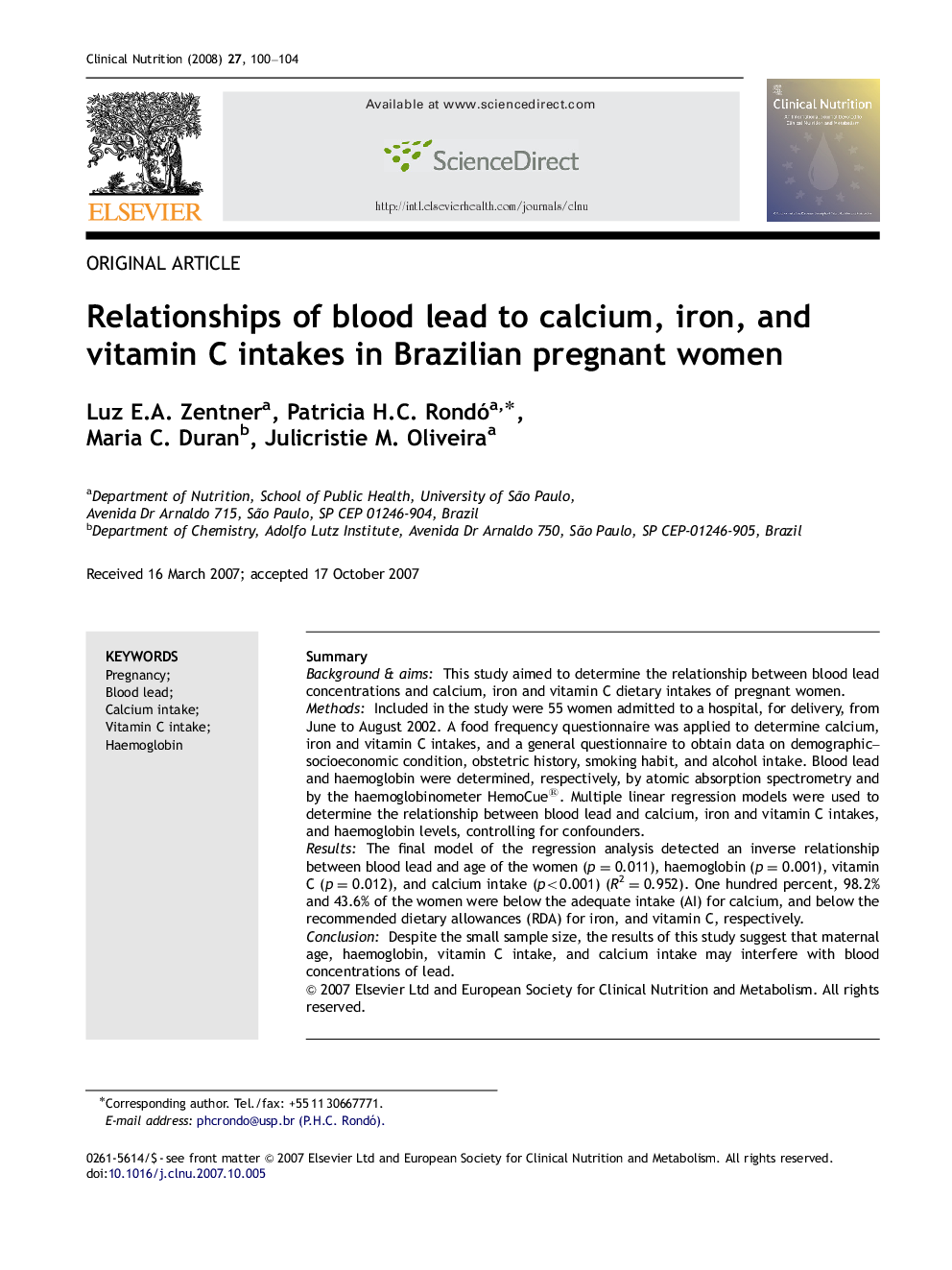| Article ID | Journal | Published Year | Pages | File Type |
|---|---|---|---|---|
| 2687748 | Clinical Nutrition | 2008 | 5 Pages |
SummaryBackground & aimsThis study aimed to determine the relationship between blood lead concentrations and calcium, iron and vitamin C dietary intakes of pregnant women.MethodsIncluded in the study were 55 women admitted to a hospital, for delivery, from June to August 2002. A food frequency questionnaire was applied to determine calcium, iron and vitamin C intakes, and a general questionnaire to obtain data on demographic–socioeconomic condition, obstetric history, smoking habit, and alcohol intake. Blood lead and haemoglobin were determined, respectively, by atomic absorption spectrometry and by the haemoglobinometer HemoCue®. Multiple linear regression models were used to determine the relationship between blood lead and calcium, iron and vitamin C intakes, and haemoglobin levels, controlling for confounders.ResultsThe final model of the regression analysis detected an inverse relationship between blood lead and age of the women (p=0.011), haemoglobin (p=0.001), vitamin C (p=0.012), and calcium intake (p<0.001) (R2=0.952). One hundred percent, 98.2% and 43.6% of the women were below the adequate intake (AI) for calcium, and below the recommended dietary allowances (RDA) for iron, and vitamin C, respectively.ConclusionDespite the small sample size, the results of this study suggest that maternal age, haemoglobin, vitamin C intake, and calcium intake may interfere with blood concentrations of lead.
